Finding a Way atop the world
Ever the adventurer, Ethan Way has “walked up a couple hills in North Carolina” and “was on a snowmobile in Colorado a couple times.”
So naturally it made sense to climb the highest mountain in Africa and the highest single free-standing mountain above sea level in the world.
Last month, the 51-year-old criminal defense attorney took a break from his Apalachicola practice, and set out on the longest and most treacherous hike of his life, an eight-day trek up Mt. Kilimanjaro in Tanzania.
Spoiler alert: Way reached the summit on Saturday, Oct. 7, about 19,341 feet high in negative 20-degrees Fahrenheit.
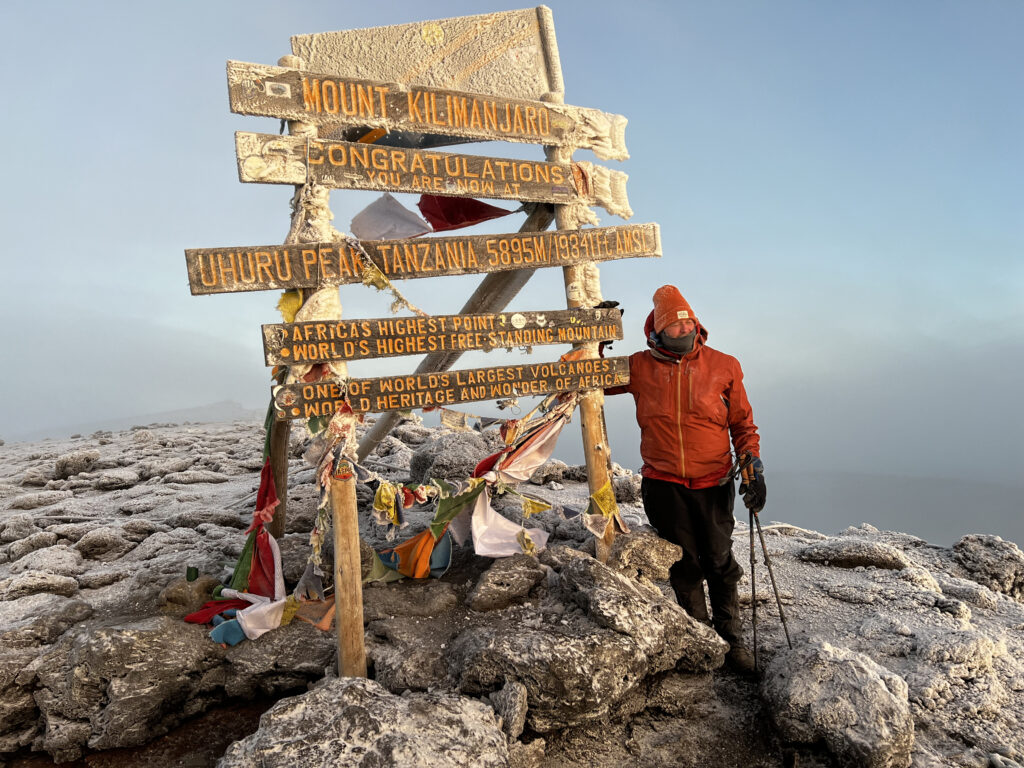
The story of how and why he took the climb begins about 15 years ago, when he was shooting the breeze with one of the professional guides who had taken him hunting in South Africa.
“Over a couple of adult beverages he told me he and a buddy of his had climbed Kilimanjaro,” Way said, recalling Ernest Hemingway’s classic novel, “The Snows of Kilimanjaro” that he had read in his youth.
“He told me the snows are going away, that the snow-capped Kilimanjaro is shrinking,” he said.
Experts say that shrinking and thinning of Kilimanjaro’s ice fields is in keeping with widespread glacier retreat in mid-to-low latitudes across the globe, and that at the current rate of global warming, most of the ice on Kilimanjaro will disappear by 2040 and all will be gone by 2060.
“I was just sitting there one day and I was thinking ‘I’d like to see the snows of Kilimanjaro,’just to go do it,” he said. “I decided I’d do it, and had to do it at that point.”
Tackling Kilimanjaro is tried by about 30,000 climbers each year, with success achieved by anywhere from 27 to 85 percent of those who try, depending on the difficulty of the route.
“I went up on an eight-day route, which has a higher rate of success, because there’s more time to adapt to the altitude,” he said. “It’s the altitude that gets you.”
Layers and layers of clothing
Way and an attorney friend, Tim Gillis from Jacksonville, opted for the Lemosho Route, and hired Climb Kili to be their trekking company.
“The government (requires) you have to have a licensed guide and that you have a certain number of porters and other support personnel,” he said. “Everyone has to have the same type of things, the outfitter you have provides the guide and support staff.”
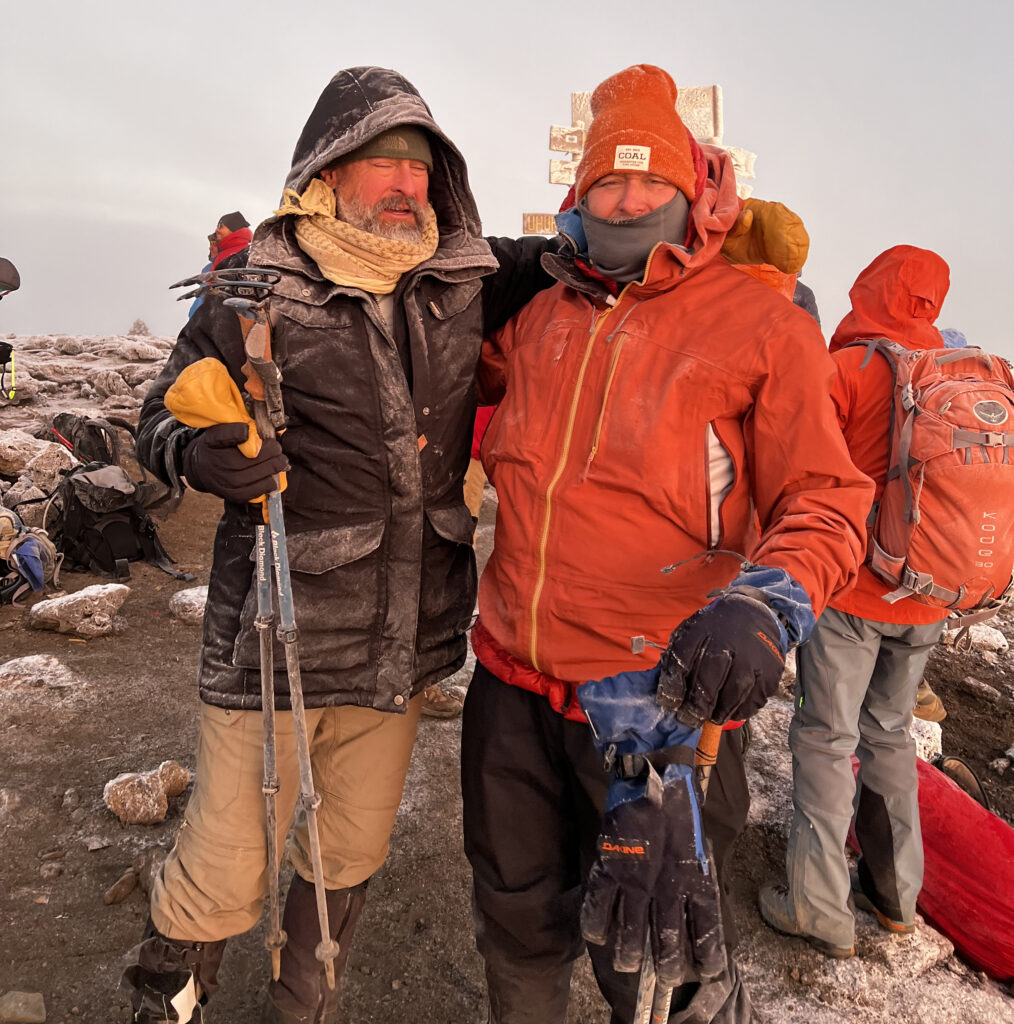
For clothing, “you have to basically get expedition quality stuff from REI or other specialty stores,” Way said. “It’s gotta keep you warm and you gotta be able to move in it. Everything I had I took with me.”
He made sure to have five layers on top and four layers of pants, two pairs of heavy duty socks, two pairs of gloves, and gaiters to keep mud and debris out of his boots. “It’s cold as all get out,” said Way.
The layering becomes important because in the course of the climb, the party will go from the Bushland / Lower Slope, with altitude between 2,600 and 5,900 feet, to the Rainforest, which is on up to 9,200 feet, to the Moorland, which ascends to 13,100 feet, to the Alpine Desert, which is the height up to 16,000 feet, and finally to the Arctic, which ends at the peak at 19,341 feet.
“You have to worry about frostbite and if you start sweating you have to worry about hypothermia,” Way said. “If you’re not layered properly, you could sweat into it.”
Way left for the trip Sept. 29, flying first to Atlanta, then Amsterdam and to Kilimanjaro International Airport.
‘Climb high, sleep low’
For eight days and seven nights, Way, Gillis and two other members of their quartet, assigned them by the tour, ascended, their goal to reach Kibo, the highest of three large dormant volcanoes.
“At every gate campsite with the exception of one, there’s a Tanzanian park ranger that has a book and keeps track of where you’re going,” Way said. “It’s very well-organized, all on paths, not free climbing.
“On day three you get to 13,000 feet and you’re now higher than most mountains in Colorado, about two-plus miles above sea level,” he said. “It rained for our first couple days and it’s starting to get cold on day 3 and then on day 4 you’re up to 15,000 feet and you come down.
“The idea is to ‘climb high, sleep low,’” he said. “The idea is to help you get your body ready for the summit.
“I took medication to help counter the altitude sickness, medication that makes you breathe more rapidly and creates more red blood cells,” Way said. “Your body is giving you subtle clues you’re not where you’re supposed to be.
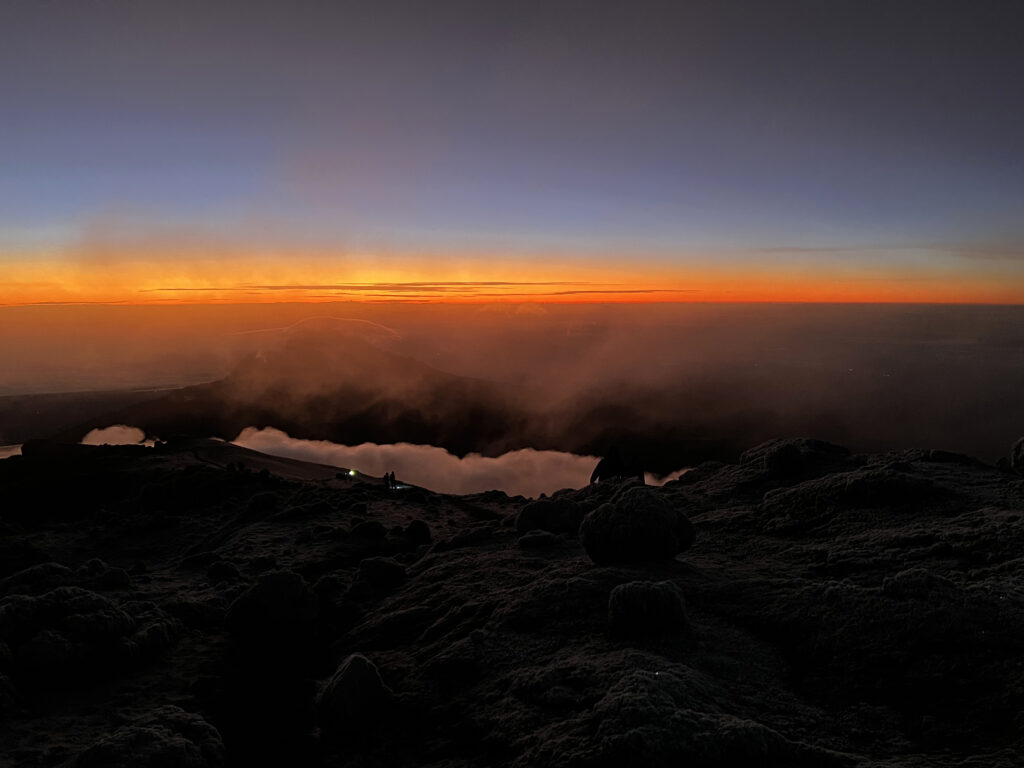
“Everybody’s singularly focused on getting to the top,” he said, “You get up, eat, hike, get to camp. I didn’t read anything, didn’t journal anything.”
Carbohydrates comprised most of the meals, prepared by a chef, with oatmeal, porridge, crepes or fruit for breakfast, and beef or chicken stew, fruits, vegetables, rice or pasta for breakfast and lunch. Plus there was pizza and hamburgers.
The lunch they had at 15,000 feet was “some of the best fried chicken I’ve ever had.” Way said.
“On the seventh day, we started at 16,000, climbed all the way to 19,341 feet and then went from that altitude back down to 16,000 for two hours to get our gear and then went to 10,000 feet, going almost straight downhill,” he said. “We went from freezing negative 20 degrees to shorts and T-shirt weather. You feel great.”
Watching the sun come up as they stood higher at that moment than just about anyone else on the planet was memorable. “It’s definitely unforgettable when you see the sunrise,” Way said. “We got there just in time, as we were getting to the summit point, the sun came up. It just comes up so fast, from pitch black to a bright blue, bright orange. You’re watching an amazing sensation.”
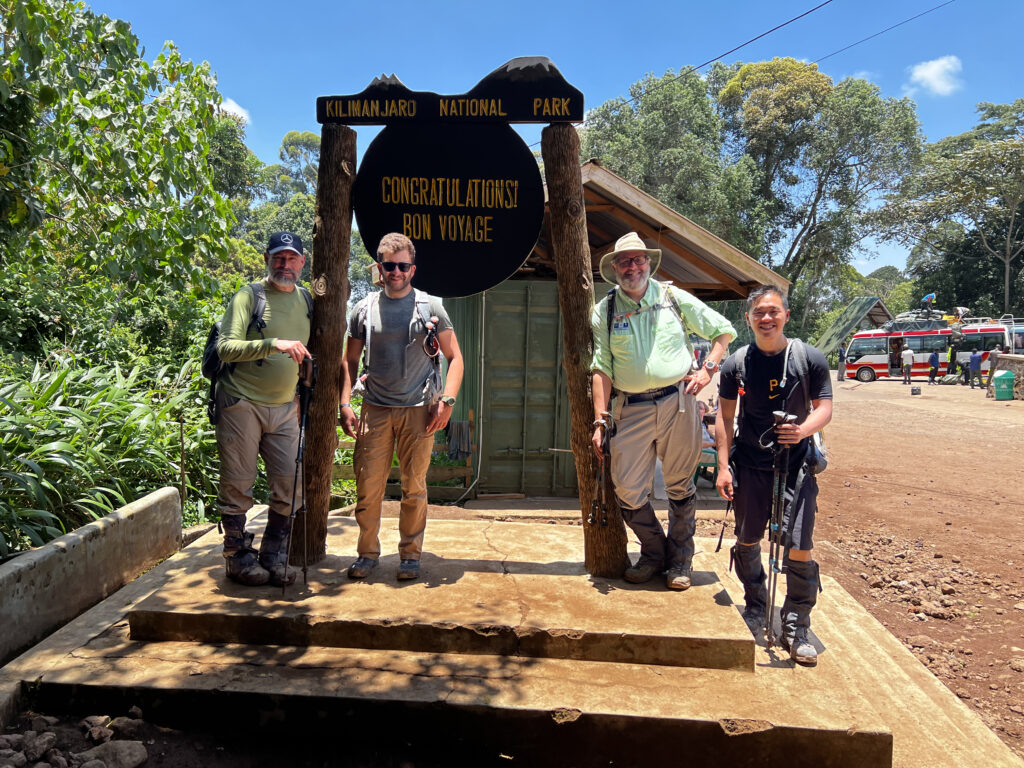
Once back at the summit, everyone signs the book that lists their completion of their epic climb. Way said he gave away about a third of his clothing, his fleece jacket and shirts and other things, to the guides and porters. “I left a lot of expedition socks behind,” he said.
What will be Way’s next big adventure?
“For right now it’s pretty much it, it’s not going to be anything big,” he said. “I’m very well aware of my age and my limitations at this point. The next go-round I want something more leisurely.”

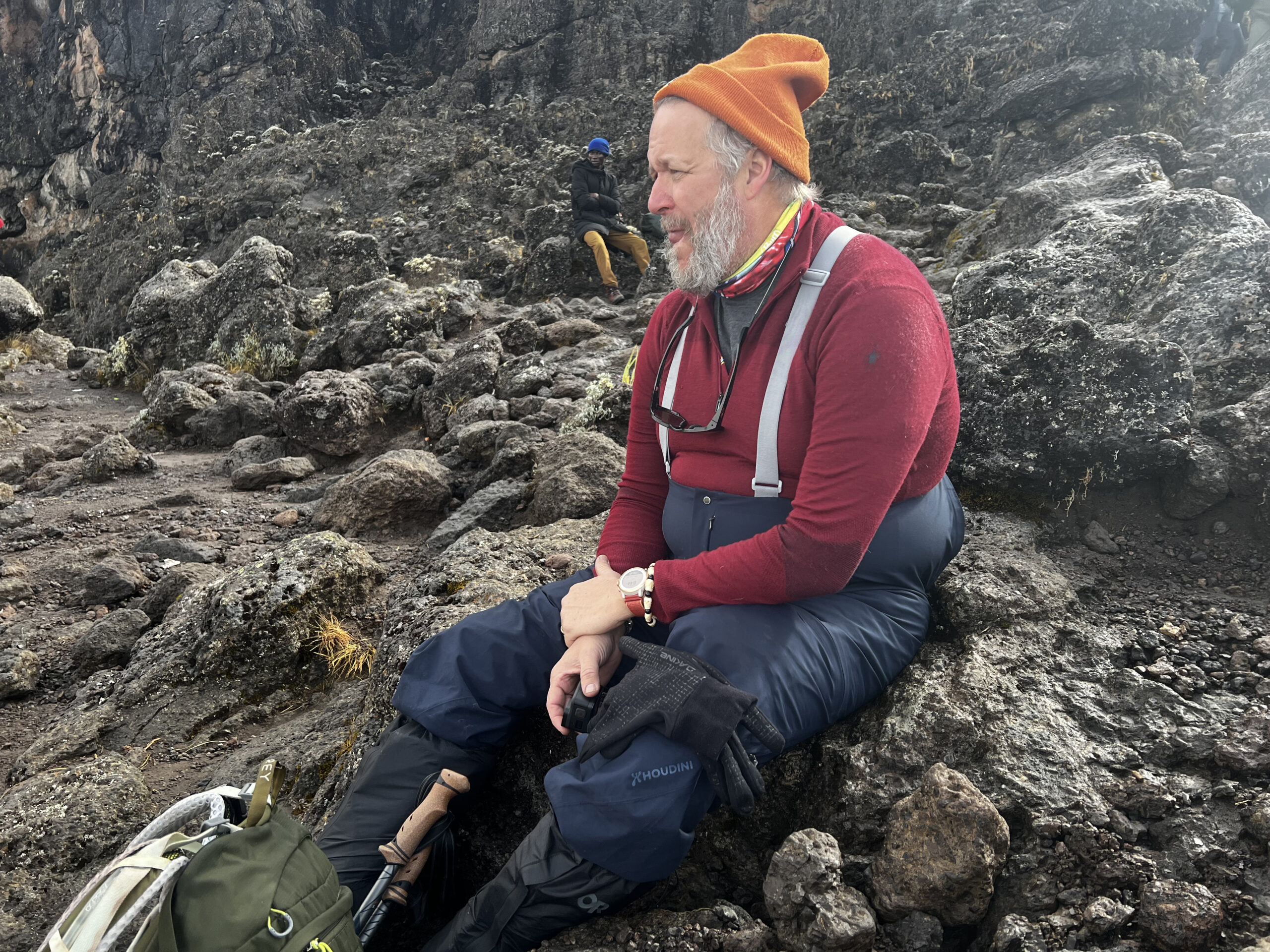
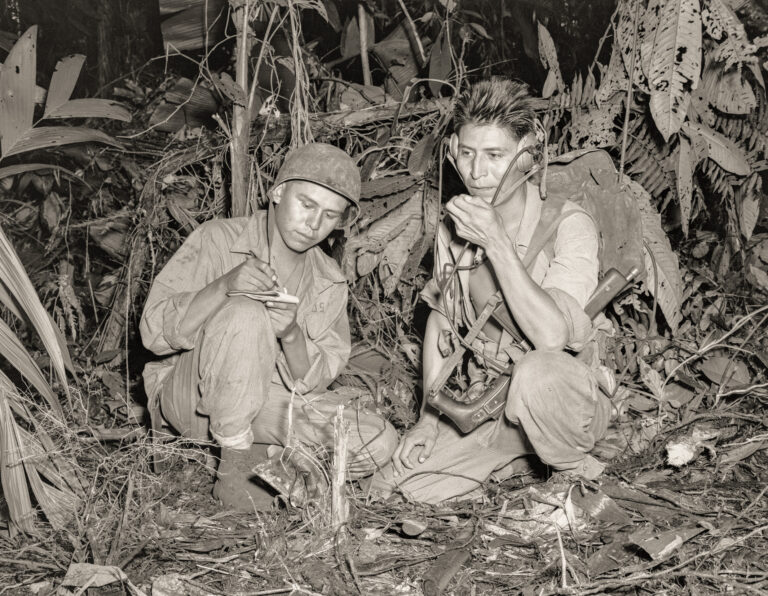
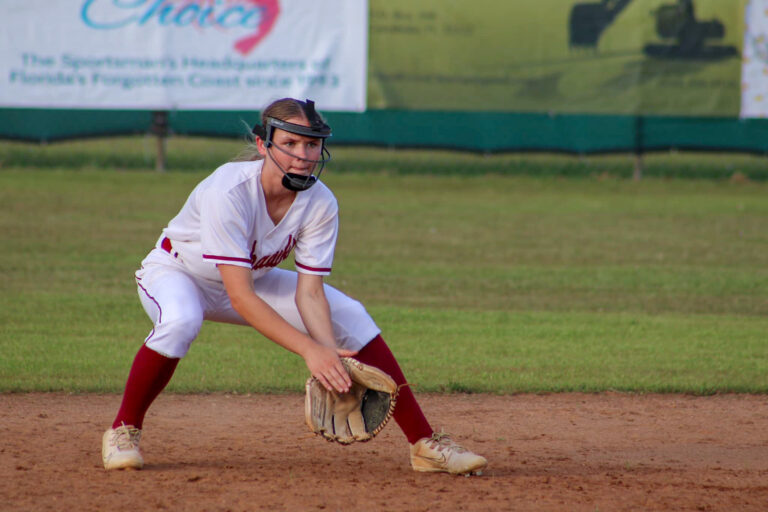
Meet the Editor
David Adlerstein, The Apalachicola Times’ digital editor, started with the news outlet in January 2002 as a reporter.
Prior to then, David Adlerstein began as a newspaperman with a small Boston weekly, after graduating magna cum laude from Brandeis University in Waltham, Massachusetts. He later edited the weekly Bellville Times, and as business reporter for the daily Marion Star, both not far from his hometown of Columbus, Ohio.
In 1995, he moved to South Florida, and worked as a business reporter and editor of Medical Business newspaper. In Jan. 2002, he began with the Apalachicola Times, first as reporter and later as editor, and in Oct. 2020, also began editing the Port St. Joe Star.